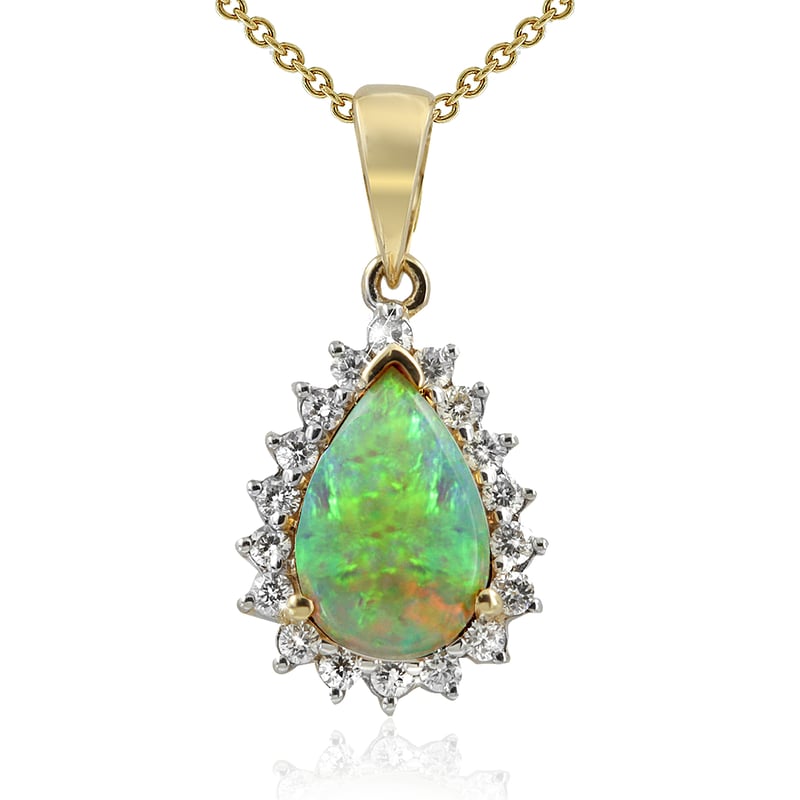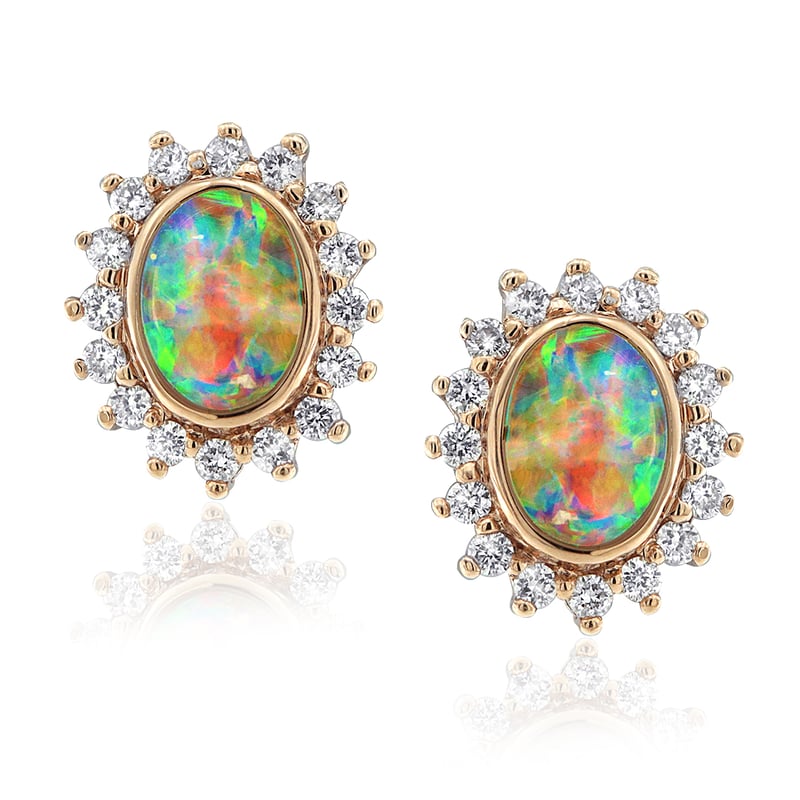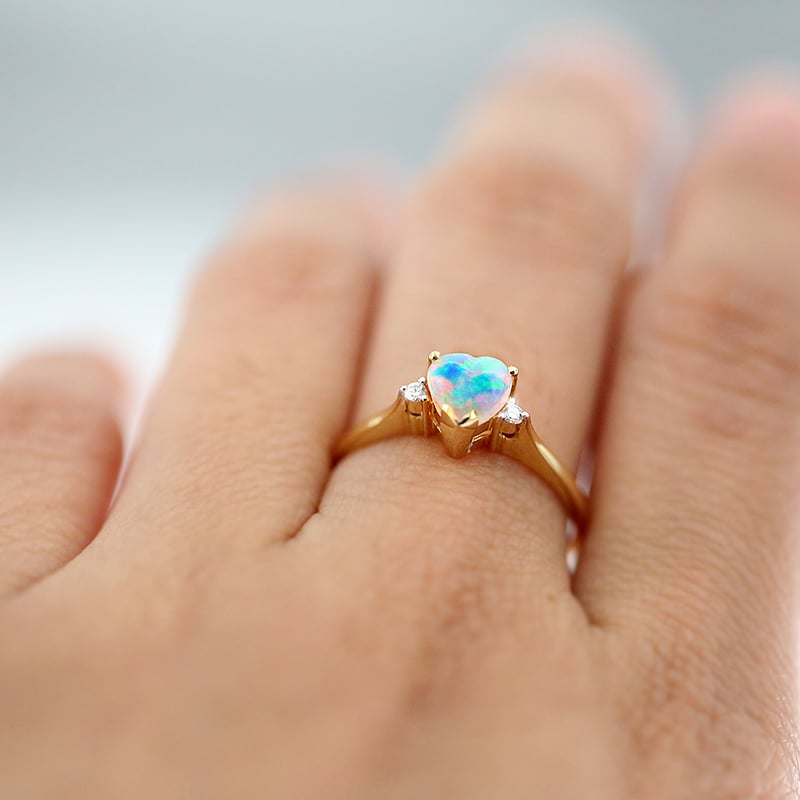When you think of South Australia the top things that come to mind are world-renowned Wine regions; impressive and diverse landscapes like Kangaroo Island and the Flinders Ranges; and Coober Pedy, considered by many to be the Opal capital of the world. As an Adelaide jeweller, we are privileged to have the fabulous gemological resource on our doorstep.
Opal is enjoying a fashion revival, as such, it's the perfect time to discover, or re-discover as it may be, this firey gemstone.
Opal is one of the world's most beautiful and rarest precious gems. Coober Pedy, in the north of South Australia, produces light Opal, commonly termed "white Opal", it can be identified by a light body tone. Light Opal is usually found in seams, unlike most other types of precious Opal, allowing it to be cut into standard sizes and making it a perfect gem for interesting jewellery designs.
Our love of this magnificent gemstone is in our blood. Gerard's father, Pat, was an opal cutter among his many skills. Here we will share some of the new additions to our Opalescence collection and answer some of the most asked questions about Opal. We hope you come to enjoy this gem as much as we do...
Coober Pedy Opal Pendant from the Opalescence Collection
WHY IS IT CALLED 'OPAL'?
Opal is from the Greek "Opallos" meaning to "see a change of colour". Australian gemstones can easily be distinguished by their brilliance and play of colour. Each Australian Opal is unique and the different varieties offer a spectacular choice of colour, shape and size. When rotated, the Opal displays a constantly changing interplay of fiery colours.
HOW IS OPAL FORMED?
Wearing Opal is like having your own personal window into the history of Australia. About 65-140 million years ago, during the Cretacious period, central Australia was covered by a giant inland sea. As the inland sea retreated, silica-rich sands were deposited, onto what is now basically a desert area. Weather conditions changed the sand sediments releasing large quantities of soluble silica, creating a gel. This gel seeped into cracks and crevices in the ground and gradually hardened through nature's heating and moulding processes, resulting in the creation of Opal.
Coober Pedy Opal earrings from the Opalescence Collection
WHERE DOES THE COLOUR IN OPAL COME FROM?
Opal is composed of silica spheres that are packed together. In precious Opal, the arrangement of the spheres is an orderly three-dimensional grid, and because of the special pattern of spheres, it is the only gemstone that has the unique natural ability to diffract light. Light passing through the transparent spheres is scattered by the array of voids. White light is diffracted and split into its various colours at different angles. The colour visible from the Opal is dependent on the size of the spheres. Blue and violet colours are created by spheres that are smaller compared to the larger spheres and voids which create red and orange colours.
WHERE DOES OPAL COME FROM?
96% of the world's precious Opal comes from three isolated areas in the outback of Australia. A small amount of precious Opal is found in Brazil and Mexico. Australian stones can easily be distinguished by their brilliance and play of colour.
In Australia, Black Opal comes from Lightning Ridge in New South Wales, while Light or White Opal is mined principally from the South Australian fields of Mintabie, Coober Pedy and Andamooka. Boulder Opal hails from Central Queensland. The Opal fields of Australia are in the harsh outback where only the hardened miner can make a living. In Coober Pedy, miners live in underground homes, dug into the barren ground, to escape the extraordinary heat and relentless dust.
Coober Pedy Opal ring from the Opalescence collection.
WHAT KIND OF OPAL DOES GERARD McCABE SELL?
Gerard McCabe sells solid opal in the Opalescence Collection - both from Cooper Pedy and Lightning Ridge. Solid opal can be cut into many shapes. Unlike diamonds and other precious gemstones, it is not cut into facets because this would spoil the play of colour with reflections. Usually, it is cut into softly curved cabochons and various freeform shapes.
Discover the impressive Gerard McCabe Opalescence Collection at any of our South Australian Jewellery Boutiques: Rundle Mall, Adelaide Arcade and the South Australian Museum Shop on North Terrace. Alternatively, contact us to view the collection over video.






